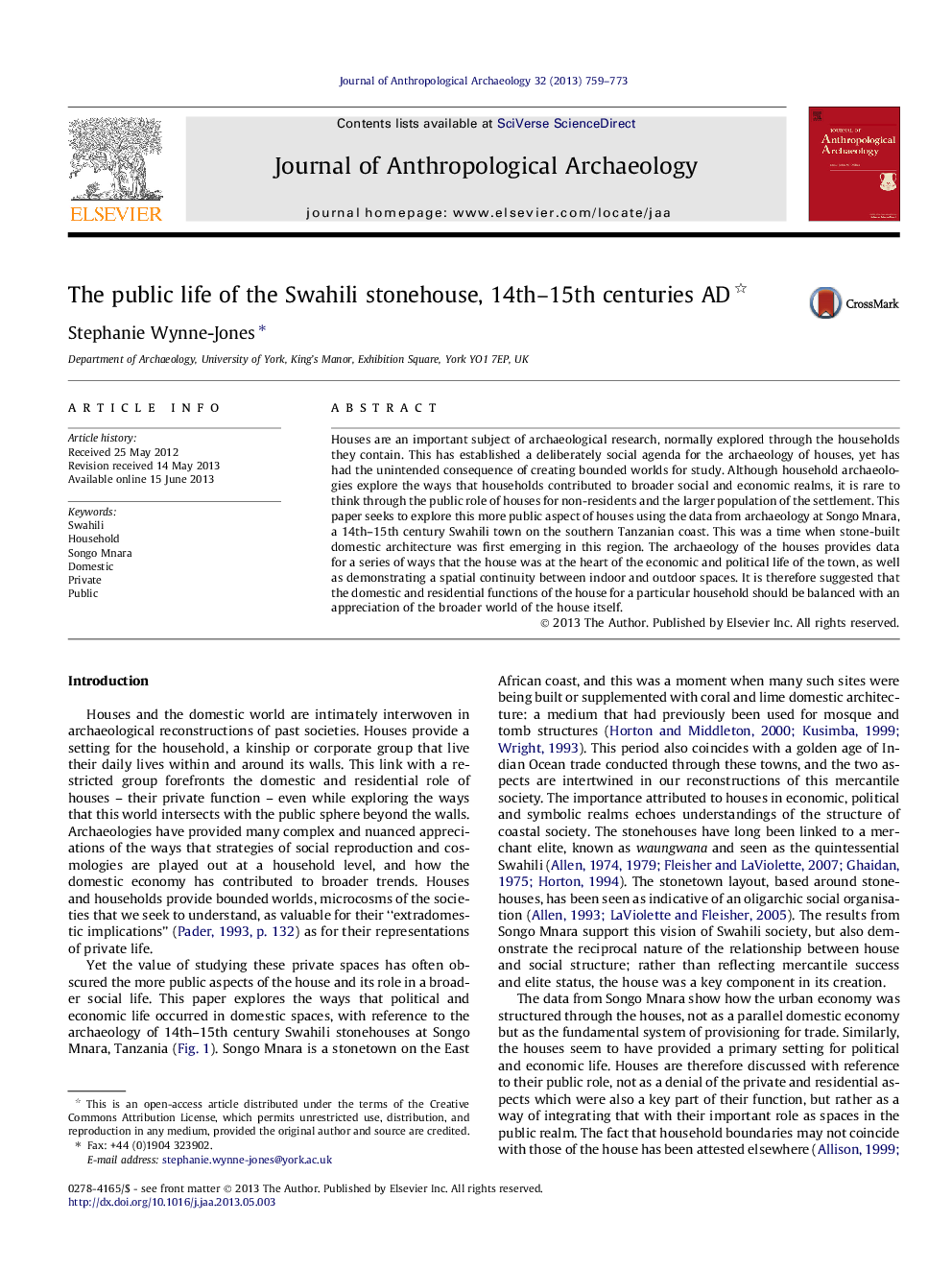| Article ID | Journal | Published Year | Pages | File Type |
|---|---|---|---|---|
| 10498725 | Journal of Anthropological Archaeology | 2013 | 15 Pages |
Abstract
Houses are an important subject of archaeological research, normally explored through the households they contain. This has established a deliberately social agenda for the archaeology of houses, yet has had the unintended consequence of creating bounded worlds for study. Although household archaeologies explore the ways that households contributed to broader social and economic realms, it is rare to think through the public role of houses for non-residents and the larger population of the settlement. This paper seeks to explore this more public aspect of houses using the data from archaeology at Songo Mnara, a 14th-15th century Swahili town on the southern Tanzanian coast. This was a time when stone-built domestic architecture was first emerging in this region. The archaeology of the houses provides data for a series of ways that the house was at the heart of the economic and political life of the town, as well as demonstrating a spatial continuity between indoor and outdoor spaces. It is therefore suggested that the domestic and residential functions of the house for a particular household should be balanced with an appreciation of the broader world of the house itself.
Related Topics
Social Sciences and Humanities
Arts and Humanities
History
Authors
Stephanie Wynne-Jones,
